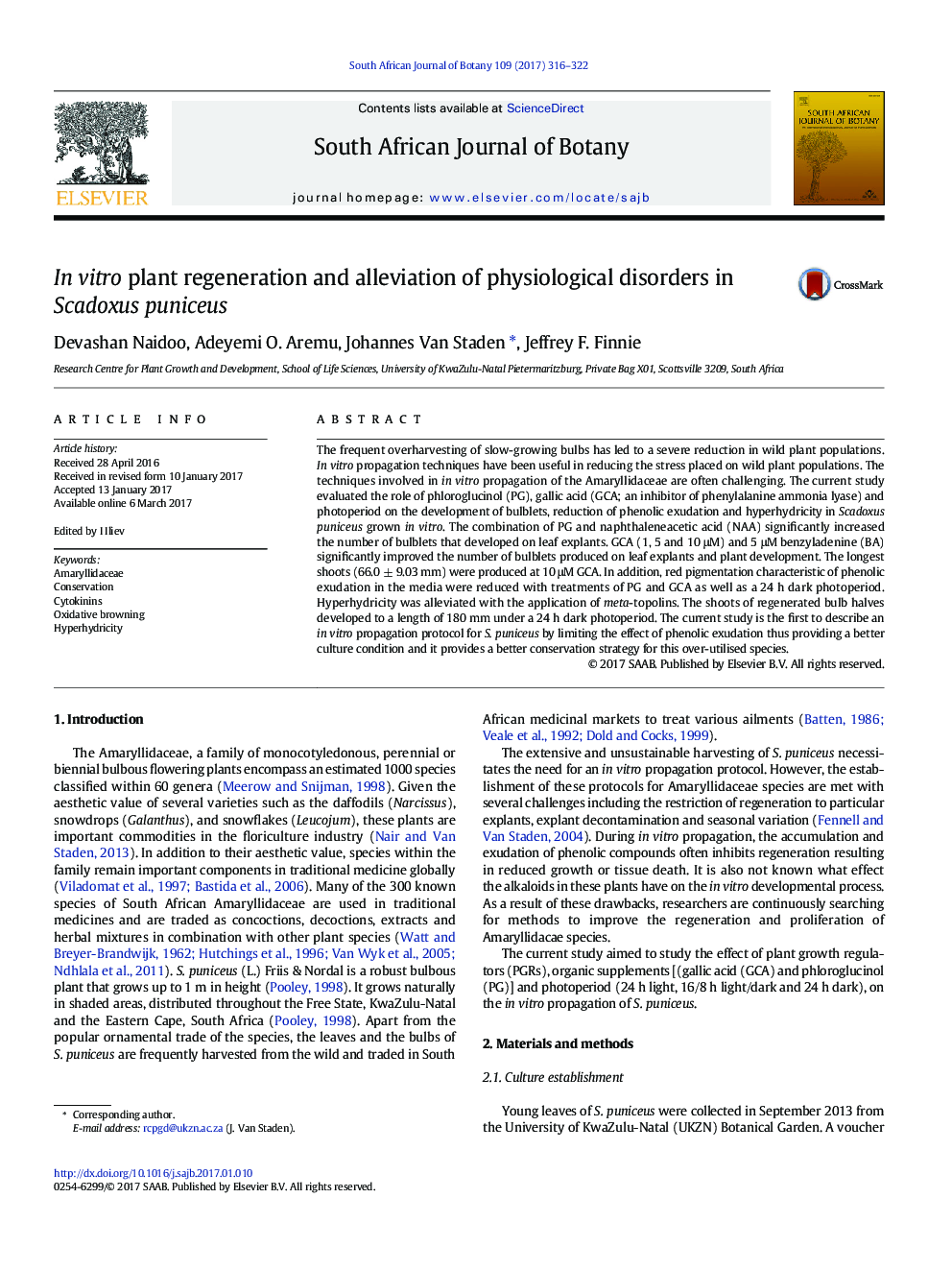| کد مقاله | کد نشریه | سال انتشار | مقاله انگلیسی | نسخه تمام متن |
|---|---|---|---|---|
| 5763060 | 1625149 | 2017 | 7 صفحه PDF | دانلود رایگان |

- First report on the in vitro propagation of Scadoxus puniceus.
- The effects of oxidative browning and hyperhydricity were limiting
- Phloroglucinol in combination with naphthalene acetic acid significantly improved bulblet production.
- Gallic acid in combination with benzyladenine improved bulblet production and overall plant development.
- Hyperhydricity of plantlets was alleviated by culturing plantlets on media containing meta-Topolin.
The frequent overharvesting of slow-growing bulbs has led to a severe reduction in wild plant populations. In vitro propagation techniques have been useful in reducing the stress placed on wild plant populations. The techniques involved in in vitro propagation of the Amaryllidaceae are often challenging. The current study evaluated the role of phloroglucinol (PG), gallic acid (GCA; an inhibitor of phenylalanine ammonia lyase) and photoperiod on the development of bulblets, reduction of phenolic exudation and hyperhydricity in Scadoxus puniceus grown in vitro. The combination of PG and naphthaleneacetic acid (NAA) significantly increased the number of bulblets that developed on leaf explants. GCA (1, 5 and 10 μM) and 5 μM benzyladenine (BA) significantly improved the number of bulblets produced on leaf explants and plant development. The longest shoots (66.0 ± 9.03 mm) were produced at 10 μM GCA. In addition, red pigmentation characteristic of phenolic exudation in the media were reduced with treatments of PG and GCA as well as a 24 h dark photoperiod. Hyperhydricity was alleviated with the application of meta-topolins. The shoots of regenerated bulb halves developed to a length of 180 mm under a 24 h dark photoperiod. The current study is the first to describe an in vitro propagation protocol for S. puniceus by limiting the effect of phenolic exudation thus providing a better culture condition and it provides a better conservation strategy for this over-utilised species.
Journal: South African Journal of Botany - Volume 109, March 2017, Pages 316-322